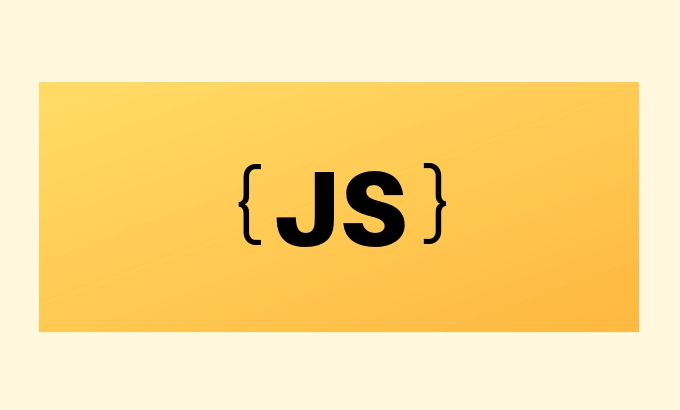Working with Regular Expressions in JavaScript
Jul 07, 2025 am 12:36 AMThe key to handling regular expressions in JavaScript is to master basic syntax and common usage. 1. There are two ways to create: literals (/pattern/flags) are suitable for fixed content, and constructors (new RegExp()) are suitable for dynamic generation; 2. Common modifiers include g (global matching), i (ignoring case), and m (multi-line pattern); 3. Basic operations include test() (detecting match), match() (extracting match), replace() (replace content), and split() (split string); 4. When replacing, you can use $1 and $2 references to group, or use functions to dynamically process. By mastering these core points, you can meet the regular needs of daily development.

It is actually not that difficult to deal with regular expressions in JavaScript. The key is to understand the basic grammar and common usage, and then flexibly use it in combination with actual scenarios.

How to create regular expressions
There are two ways to create regular expressions in JavaScript: literals and constructors .
Using literals is simpler and more intuitive, such as /pattern/flags , while the constructor is new RegExp('pattern', 'flags') .
When to use which one? If your regular content is fixed, it is recommended to use literals; if you need to dynamically generate regular expressions (such as user input), you have to use constructors.

For example:
- Fixed matching email:
/\S @\S \.\S / - Dynamic replacement keywords:
new RegExp(searchTerm, 'g')
Common modifiers and uses
Modifiers affect matching behavior, and there are three common ones:

-
g: Global match, find all results instead of stopping if you find the first one -
i: Ignore case, for example,/hello/ican match "HELLO", "hello", etc. -
m: Multi-line pattern, let^and$match the beginning and end of each row respectively
For example, if you want to find all the "error" in a piece of text, regardless of upper and lower case, you can write it as: /error/gi
For example, if you want to determine whether a string starts with a certain word, but may have multiple lines of content, you need to add an m modifier.
Basic operations of matching and extraction
JavaScript provides several common methods to operate regular operations:
-
test(): Check whether it matches, returns a boolean value, suitable for conditional judgment -
match(): Find matches in a string, return an array or null -
replace(): replaces matching content, often used to clean or format data -
split(): split strings according to regular intervals, such as splitting by multiple spaces
For example, verify whether the mobile phone number meets the format:
/^\d{11}$/.test('13800138000') // trueExtract all links from a paragraph:
str.match(/https?:\/\/[^\s] /g)
Tips for substitution and grouping
If you want to use matching content during replacement, you can use $1 and $2 to reference the grouping.
For example, change the date format from YYYY-MM-DD to DD/MM/YYYY :
'2025-04-05'.replace(/(\d{4})-(\d{2})-(\d{2})/, '$3/$2/$1')Parentheses are used here to define the capture group, and then the corresponding part is referenced by numbers in the replacement string.
Another situation is dynamic processing of the replacement function, such as capitalizing the first letter of each matching word:
str.replace(/\b\w /g, word => word.charAt(0).toUpperCase() word.slice(1))
Basically that's it. It’s almost time to master these points and cope with the regular needs in daily development.
The above is the detailed content of Working with Regular Expressions in JavaScript. For more information, please follow other related articles on the PHP Chinese website!

Hot AI Tools

Undress AI Tool
Undress images for free

Undresser.AI Undress
AI-powered app for creating realistic nude photos

AI Clothes Remover
Online AI tool for removing clothes from photos.

Clothoff.io
AI clothes remover

Video Face Swap
Swap faces in any video effortlessly with our completely free AI face swap tool!

Hot Article

Hot Tools

Notepad++7.3.1
Easy-to-use and free code editor

SublimeText3 Chinese version
Chinese version, very easy to use

Zend Studio 13.0.1
Powerful PHP integrated development environment

Dreamweaver CS6
Visual web development tools

SublimeText3 Mac version
God-level code editing software (SublimeText3)

Hot Topics
 PHP regular expression validation: number format detection
Mar 21, 2024 am 09:45 AM
PHP regular expression validation: number format detection
Mar 21, 2024 am 09:45 AM
PHP regular expression verification: Number format detection When writing PHP programs, it is often necessary to verify the data entered by the user. One of the common verifications is to check whether the data conforms to the specified number format. In PHP, you can use regular expressions to achieve this kind of validation. This article will introduce how to use PHP regular expressions to verify number formats and provide specific code examples. First, let’s look at common number format validation requirements: Integers: only contain numbers 0-9, can start with a plus or minus sign, and do not contain decimal points. floating point
 How to match timestamps using regular expressions in Go?
Jun 02, 2024 am 09:00 AM
How to match timestamps using regular expressions in Go?
Jun 02, 2024 am 09:00 AM
In Go, you can use regular expressions to match timestamps: compile a regular expression string, such as the one used to match ISO8601 timestamps: ^\d{4}-\d{2}-\d{2}T \d{2}:\d{2}:\d{2}(\.\d+)?(Z|[+-][0-9]{2}:[0-9]{2})$ . Use the regexp.MatchString function to check if a string matches a regular expression.
 Master regular expressions and string processing in Go language
Nov 30, 2023 am 09:54 AM
Master regular expressions and string processing in Go language
Nov 30, 2023 am 09:54 AM
As a modern programming language, Go language provides powerful regular expressions and string processing functions, allowing developers to process string data more efficiently. It is very important for developers to master regular expressions and string processing in Go language. This article will introduce in detail the basic concepts and usage of regular expressions in Go language, and how to use Go language to process strings. 1. Regular expressions Regular expressions are a tool used to describe string patterns. They can easily implement operations such as string matching, search, and replacement.
 How to validate email address in Golang using regular expression?
May 31, 2024 pm 01:04 PM
How to validate email address in Golang using regular expression?
May 31, 2024 pm 01:04 PM
To validate email addresses in Golang using regular expressions, follow these steps: Use regexp.MustCompile to create a regular expression pattern that matches valid email address formats. Use the MatchString function to check whether a string matches a pattern. This pattern covers most valid email address formats, including: Local usernames can contain letters, numbers, and special characters: !.#$%&'*+/=?^_{|}~-`Domain names must contain at least One letter, followed by letters, numbers, or hyphens. The top-level domain (TLD) cannot be longer than 63 characters.
 How to verify password using regular expression in Go?
Jun 02, 2024 pm 07:31 PM
How to verify password using regular expression in Go?
Jun 02, 2024 pm 07:31 PM
The method of using regular expressions to verify passwords in Go is as follows: Define a regular expression pattern that meets the minimum password requirements: at least 8 characters, including lowercase letters, uppercase letters, numbers, and special characters. Compile regular expression patterns using the MustCompile function from the regexp package. Use the MatchString method to test whether the input string matches a regular expression pattern.
 Chinese character filtering: PHP regular expression practice
Mar 24, 2024 pm 04:48 PM
Chinese character filtering: PHP regular expression practice
Mar 24, 2024 pm 04:48 PM
PHP is a widely used programming language, especially popular in the field of web development. In the process of web development, we often encounter the need to filter and verify text input by users, among which character filtering is a very important operation. This article will introduce how to use regular expressions in PHP to implement Chinese character filtering, and give specific code examples. First of all, we need to clarify that the Unicode range of Chinese characters is from u4e00 to u9fa5, that is, all Chinese characters are in this range.
 Golang regular expression usage guide
Apr 08, 2024 pm 02:15 PM
Golang regular expression usage guide
Apr 08, 2024 pm 02:15 PM
Regular expressions in Go provide a powerful string processing tool: use the regexp package for regular expression operations. Use regular expression syntax to match and manipulate strings. Matches character classes, repeating characters, groupings, anchors, and boundaries. Match strings with MatchString, extract matches with FindStringSubmatch, and replace strings with ReplaceAllString. Application scenarios include verifying email addresses, extracting HTML links, etc.
 PHP regular expressions: exact matching and exclusion of fuzzy inclusions
Feb 28, 2024 pm 01:03 PM
PHP regular expressions: exact matching and exclusion of fuzzy inclusions
Feb 28, 2024 pm 01:03 PM
PHP Regular Expressions: Exact Matching and Exclusion Fuzzy inclusion regular expressions are a powerful text matching tool that can help programmers perform efficient search, replacement and filtering when processing text. In PHP, regular expressions are also widely used in string processing and data matching. This article will focus on how to perform exact matching and exclude fuzzy inclusion operations in PHP, and will illustrate it with specific code examples. Exact match Exact match means matching only strings that meet the exact condition, not any variations or extra words.






